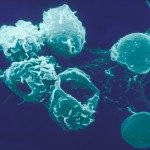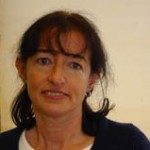Link to Pubmed [PMID] – 31026413
Annu. Rev. Immunol. 2019 Apr;37:497-519
During development innate lymphoid cells and specialized lymphocyte subsets colonize peripheral tissues, where they contribute to organogenesis and later constitute the first line of protection while maintaining tissue homeostasis. A few of these subsets are produced only during embryonic development and remain in the tissues throughout life. They are generated through a unique developmental program initiated in lympho-myeloid-primed progenitors, which lose myeloid and B cell potential. They either differentiate into innate lymphoid cells or migrate to the thymus to give rise to embryonic T cell receptor-invariant T cells. At later developmental stages, adaptive T lymphocytes are derived from lympho-myeloid progenitors that colonize the thymus, while lymphoid progenitors become specialized in the production of B cells. This sequence of events highlights the requirement for stratification in the establishment of immune functions that determine efficient seeding of peripheral tissues by a limited number of cells.




